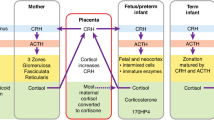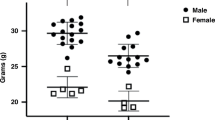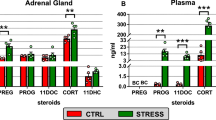Abstract
Summary: The in vitro incorporation into mouse placenta of [14C]leucine, [3H]uridine, and [ 3H)thymidine fell between gestational days 14 and 19 by 61, 30, and 72% respectively; ornithine decarboxylase activity fell by 75% Injection of dexamethasone resulted on day 14 in values normally found between days 15 and 18. These changes coincided with rising activity in fetal liver of the enzyme 11β-hydroxysteroid:NADP oxidoreductase, which reduced the abundant 11-dehydrocorticosterone to the active hormone, corti-costerone. These events appear to be part of a spectrum of effects produced by corticosteroids on fetal growth at this time, probably mediated primarily by fetal liver.
Speculation: The events induced by corticosteroids in placenta and brain involve changes in the enzyme which interconverts corticosterone and its inactive 11-dehydrometabolite. The same relationship has been reported between this enzyme and maturation of rat and rabbit lung, but at a later state of gestation. This suggests that regulation of these phenomena is not simply due to a rise in circulating hormone level, but involves enzyme activities in tissues which function to some extent independently,
Similar content being viewed by others
Log in or create a free account to read this content
Gain free access to this article, as well as selected content from this journal and more on nature.com
or
Author information
Authors and Affiliations
Rights and permissions
About this article
Cite this article
Tye, L., Richards, J. & Burton, A. Corticosteroids, Ornithine Decarboxylase Activity and the Incorporation of Leucine, Uridine, and Thymidine into Mouse Placenta. Pediatr Res 12, 1155–1156 (1978). https://doi.org/10.1203/00006450-197812000-00012
Issue date:
DOI: https://doi.org/10.1203/00006450-197812000-00012



